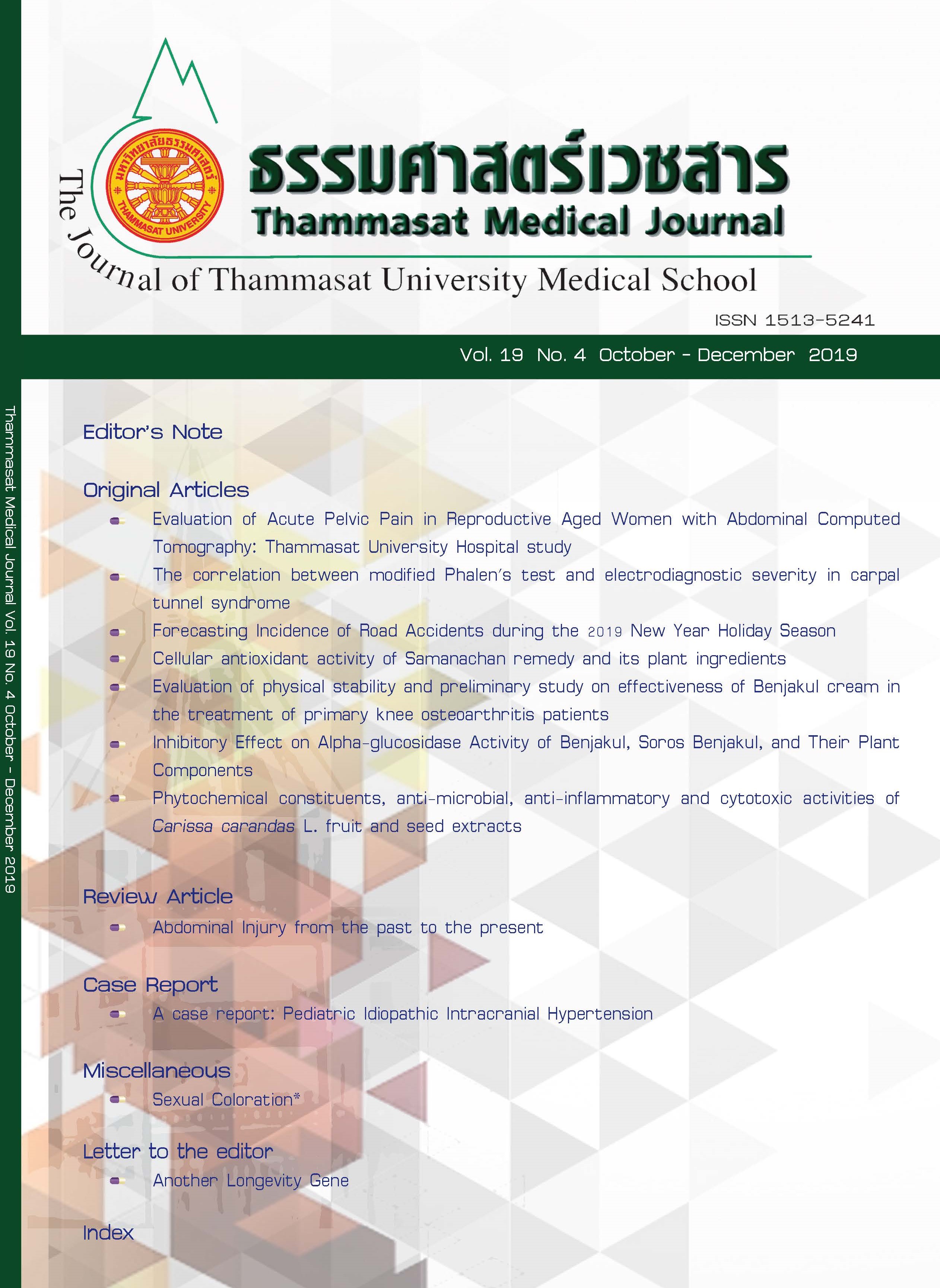Cellular antioxidant activity of Samanachan remedy and its plant ingredients
Keywords:
Samanachan remedy, Antioxidant, Khampramong temple, Thai traditional remedy, Cancer, Superoxide inhibitionAbstract
Introduction: Samannachan remedy is used to modulate human body elements in cancer patients at Khampramong temple in Sakhon Nakhon province. Samanachan remedy consists of 10 herbal plants namely Kam-lang-sue-krong (Betula alnoides), Maa-kra-tuep-rong (Ficus foveolata), Changnaw (Ochna integerrima), Kra-jon-nao (Coptosapelta flavescens), Tra-kri-ton (Litsea cubeba),
Khan-thong-pha-ya-bath (Suregada multiflora), Ya-nang-dang (Bauhinia strychnifolia), Faang (Caesalpinia sappan), Fa-tha-lai-jone (Andrographis paniculata) and Ham (Coscinium fenestratum).
Methods: The extracts of Samanachan remedy and its plant ingredients were prepared by maceration and decoction. All extracts were investigated for the inhibition of superoxide formation measured by NBT reduction using human promyelocytic leukemia cell line (HL-60).
Results: The ethanolic and aqueous extracts of Samanachan remedy inhibited superoxide formation with IC50 31.45 ± 4.92 μg/ml and IC50 47.18 ± 4.74 μg/ml, respectively. The ethanolic extract
of C. sappan showed the highest activity (IC50 5.75 ± 0.86 μg/ml) when compared with other extracts.
Conclusions: The ethanolic and aqueous extract of Samannachan remedy showed moderate antioxidant activity as compared to the positive control.



